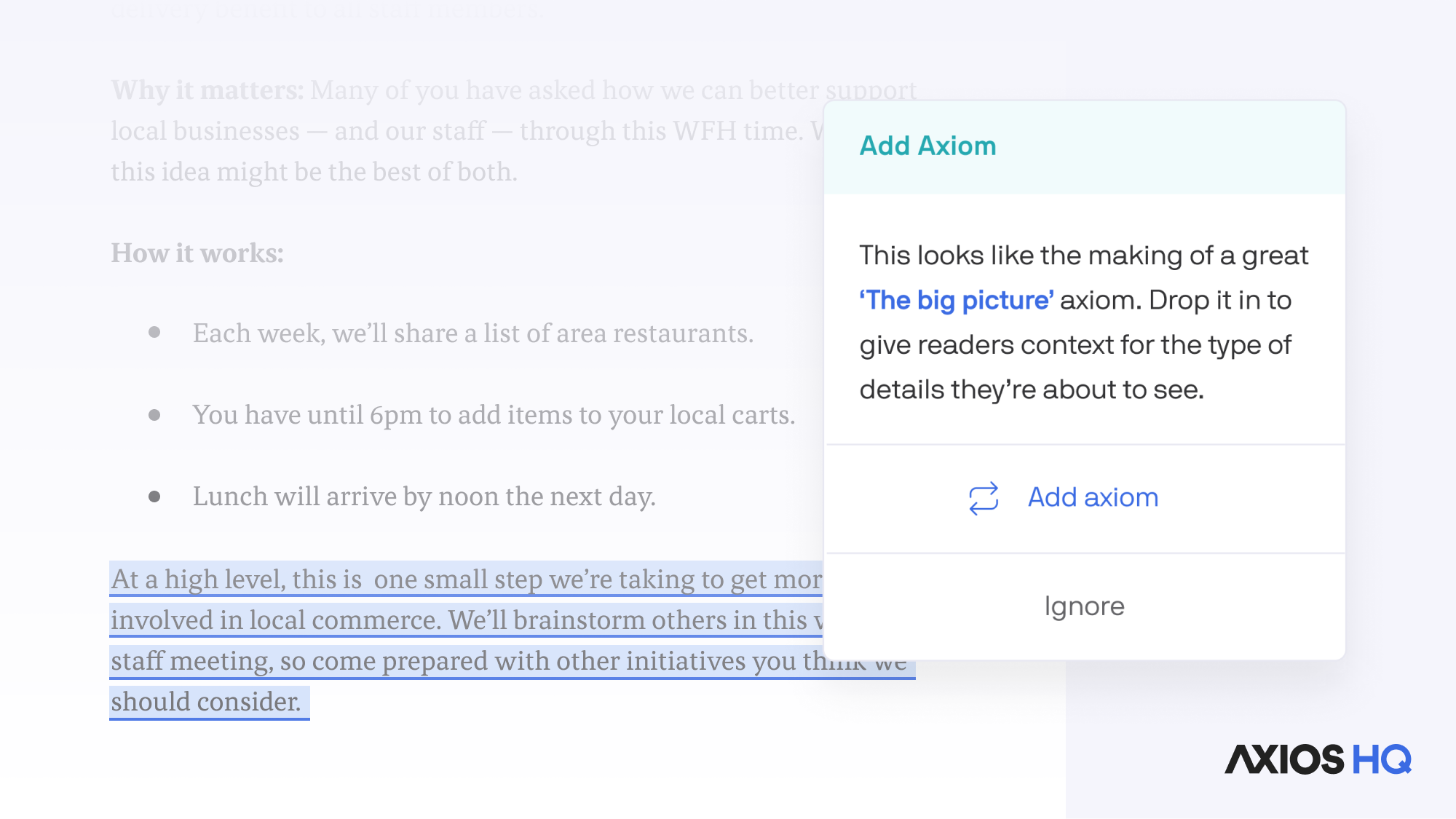| | | | | | | | | | | Axios What's Next | | By Jennifer A. Kingson, Joann Muller and Erica Pandey ·Mar 04, 2022 | | Happy Friday! What's Next will be taking a break next week — sorry, fans — but we will be back in your inbox on March 14. 🔮 Join Axios virtually at our inaugural What's Next Summit on April 5. Register here to attend livestream sessions with discussions on trends that will revolutionize our future. Today's Smart Brevity count: 1,232 words ... 4.5 minutes. | | | | | | 1 big thing: The cold hard truth about EVs in winter |  Data: Recurrent; Chart: Baidi Wang/Axios More Americans are opting to purchase an electric vehicle, but some EV owners are surprised to find out how much their car's driving range is compromised by winter weather, Joann Muller and Margaret Harding McGill write. Why it matters: Getting over the hurdles of buying an EV — the higher sticker price, knowing where to charge it or the fear of getting stranded — is hard enough. - If your car doesn't live up to the EPA-estimated range that was promised, it could undermine confidence in EVs and even deter potential buyers.
Case in point: In January, Margaret and her husband took their first road trip in their new Mustang Mach-E from Washington, D.C., to a cabin near Wardensville, West Virginia, roughly 110 miles away. - Their car has an EPA range of 300 miles, but in the chilly weather, the estimate before they left home was only about 200 miles, so they had to build in a stop for recharging.
Reality check: Most electric vehicles experience some loss of driving range in cold weather. What they're saying: "Batteries are like humans," Anna Stefanopoulou, director of the University of Michigan's Energy Institute, told Wired. - "They prefer the same sort of temperature range that people do. Anything below 40 or above 115 degrees Fahrenheit and they're not going to deliver their peak performance," according to Wired.
There are steps EV owners can take to maximize their cold-weather driving range, Donna Dickson, chief engineer of the Mach-E, tells Axios. - Start the vehicle while it's plugged in to allow the battery to warm up.
- "The key is warming that battery up," Dickson said. "That pre-conditioning helps so much because it gets it to a temperature level that works efficiently."
Read the full story |     | | | | | | 2. Workcations are the new business trips |  | | | Illustration: Shoshana Gordon/Axios | | | | Some 42% of people who took frequent work trips pre-pandemic say they won't do so in the new working world — and that's bad news for airlines, which tend to earn the majority of their revenue from business travelers. But, but, but: There's hope. Many of the people abandoning business trips are planning to take "workcations" instead, Erica Pandey writes. The big picture: Telecommuting has freed many workers up to work from anywhere, and many of them are workcationing — taking trips to fun places without taking days off, or extending vacations to just work from there for a bit. - 40% say they're planning to take a blended trip in the next year that's equal parts business and leisure, according to a Morning Consult survey of workers.
- That's about as many people as those who say they plan to take a pure business trip in the next year — 41%.
Worth noting: Pure leisure trips are still the most popular by far — with 76% of respondents saying they have a vacation planned in the next year. |     | | | | | | 3. The Ukraine invasion means longer flight times |  Data: FlightAware; Map: Jacque Schrag/Axios The closure of vast stretches of airspace from North America to Russia has airlines scrambling to determine what routes are still feasible and which flights can be rerouted, Axios' Andrew Freedman writes. Why it matters: Flight times are increasing, along with their carbon footprints. - In many cases, new U.S. airline routes to avoid Ukrainian and Russian airspace have been adding time to long-distance flights, resulting in greater emissions and higher costs for airlines amid increasing fuel prices.
- According to FlightAware, United Airlines' rerouted flight from Chicago to Delhi, for example, has added at least an hour to the eastbound journey and about two hours to the return.
The big picture: The prohibition of U.S. airlines from Russian airspace is blocking the most efficient flight paths between continents, including for flights between much of the U.S. and South Asia. Zoom in: According to Umang Gupta, managing director at Alton Aviation Consultancy, the typical flight time between Europe and Asia is about 11.8 hours, and 13.5 hours flying the reverse leg. - "In a best-case scenario, more than two hours of flight time will be added in each direction," Gupta told Axios.
Read the full story |     | | | | | | A message from Axios | | Remote teams run on Axios HQ | | |  | | | | Axios HQ is a powerful tool helping distributed teams — big and small — stay connected. - It teaches the Smart Brevity® style you trust from Axios, and is purpose-built so any leader can make vital staff and stakeholder updates more engaging.
Learn More | | | | | | 4. U.S. vs. Russia for the future of the internet |  | | | Illustration: Aïda Amer/Axios | | | | U.S. officials are stepping up a campaign to defeat a Russian candidate for a UN agency that could determine how much control governments have over the internet, Margaret Harding McGill writes in Axios Login. The big picture: Russia's designs on the little-known agency raise the stakes for what the Russian government's vision of the internet could mean for the rest of the world, especially following its invasion of Ukraine. State of play: The U.S. is running a candidate to lead the International Telecommunication Union (ITU), the telecommunications agency of the UN. - If elected, Doreen Bogdan-Martin would be the first female secretary-general of the ITU, and the first U.S. leader since the 1960s.
- Her competition is Russian candidate Rashid Ismailov, who previously worked for the Russian government and Huawei, as well as Nokia and Ericsson.
Why it matters: China and Russia would "encourage governments to have greater control over who's allowed to use the internet, how it's allowed to be used and whether or not there should be free flow of information," David Gross, a former ambassador for international communications policy, told Axios. - That's in contrast to the Western "bottom-up approach" of technologists, civil society groups and others determining internet standards and protocols.
Read the full story |     | | | | | | 5. 2022: Year of the mushroom? |  | | | Illustration: Maura Losch/Axios | | | | Mushrooms are showing up everywhere these days — as meat substitutes, in coffee, in environmentally friendly packaging and in a promising treatment for depression, Jennifer A. Kingson writes. Driving the news: Produce Blue Book has declared mushrooms one of the "top five food trends for 2022." (The others are potato milk, indoor farming, restaurant evolution and packaging innovation.) - "Out of all the produce categories to pick as "trendy," I think mushrooms are going to be the one that continues to gain popularity with consumers," writes Pamela Riemenschneider, retail editor for Blue Book Services, which provides marketing information for the fruit and vegetable industry.
- "From oyster mushrooms masquerading as scallops to consumer interest beyond buttons and criminis, consumers are looking for a meaty umami flavor without the meaty calorie load."
Details: 'Shroomy new products are flooding the market. - Pan's Mushroom Jerky is made with shiitakes.
- Giorgio's Shredded Portabella Mushrooms come in two flavors, Sriracha and barbecue.
- Shrooms Crispy Mushrooms are a potato chip alternative that come in flavors like sea salt, spicy jalapeno and mesquite barbecue. (The manufacturer also sells Shrooms Snack Bars in flavors like Crispy Mushroom Chocolate Chunk.)
Mushroom coffee is cropping up everywhere — it's even sold at Walmart — and a new line of mushroom oat milk drinks has hit the market. - Drinksfeed.com offers a primer on "how to choose your first mushroom coffee."
- "When they are used for beverages, they are typically dehydrated, made into an extract, and blended into coffee or other drinks," per Feast and Field.
- While the health benefits are likely overblown, "proponents claim mushroom beverages have the potential to boost immune function, reduce inflammation, and support energy levels throughout the day."
Bonus: Our colleague Asher Price at Axios Austin has been brewing up broccoli tea. Share this story |     | | | | | | A message from Axios | | Remote teams run on Axios HQ | | |  | | | | Axios HQ is a powerful tool helping distributed teams — big and small — stay connected. - It teaches the Smart Brevity® style you trust from Axios, and is purpose-built so any leader can make vital staff and stakeholder updates more engaging.
Learn More | | | | Was this email forwarded to you? Get your daily dose of What's Next magic by signing up for our free newsletter here. |  | It's called Smart Brevity®. Over 200 orgs use it — in a tool called Axios HQ — to drive productivity with clearer workplace communications. | | | | | | Axios thanks our partners for supporting our newsletters. If you're interested in advertising, learn more here.
Sponsorship has no influence on editorial content. Axios, 3100 Clarendon Blvd, Suite 1300, Arlington VA 22201 | | | You received this email because you signed up for newsletters from Axios.
Change your preferences or unsubscribe here. | | | Was this email forwarded to you?
Sign up now to get Axios in your inbox. | | | | Follow Axios on social media:    | | | | | |
No comments:
Post a Comment